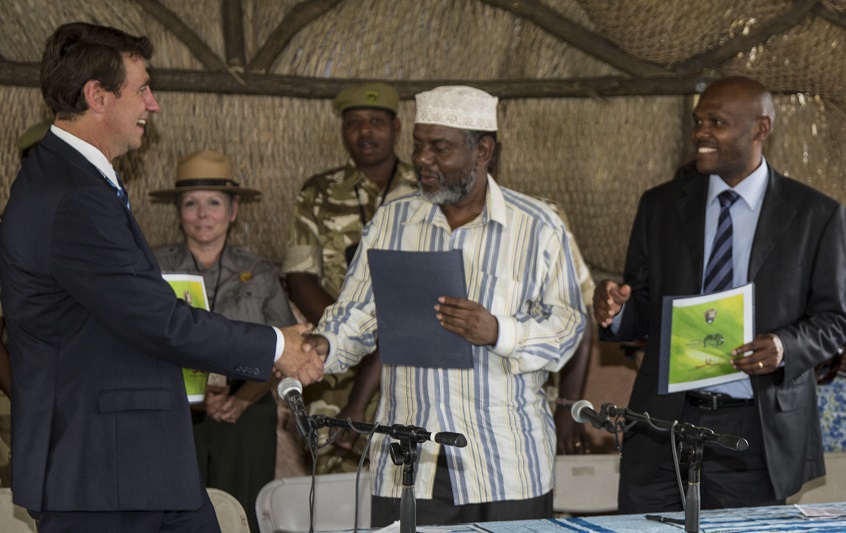Kenyan and U.S. Park Rangers Form Historic Partnership

U.S. National Park Service rangers and Kenyan Wildlife Service rangers met on the National Mall Friday morning as part of the Folklife Festival’s Kenya: Mambo Poa program to sign a historic agreement: the first Sister Park partnership between the two countries, specifically between Idaho’s Hagerman Fossil Beds and northern Kenya’s Sibiloi National Park.
The alliance joins together the Kenya Wildlife Service, National Museums of Kenya, and U.S. National Park Service, and is the first of its kind between the United States and any African country.

“[Kenyan wildlife is] our national heritage and our world pride,” said KWS deputy director Edwin Wanyoni.
But Sibiloi National Park is not only known for its zebras, elephants, and crocodiles—it’s also home to world-class fossil beds. The area is called the “cradle of mankind” for the early hominid skeletons unearthed there such as Turkana Boy (homo erectus). Part of the reason for the Sister Parks initiative is sharing paleontological research between the two countries. Hagerman and Sibiloi dig sites are around the same period in the fossil record and include some of the same species of extinct animals and plants.
One of Kenya’s goals for the partnership is to increase awareness of the treasures of northern Kenya, for research and sightseeing alike. Cabinet secretary for the Ministry of Sport, Culture and the Arts Hassan Wario has grand plans for tourism with Sibiloi: he wants a “Disney World of the human story” in its power to attract global visitors. “One thing that will always be defended, and will always remain, is that that is the cradle of mankind,” and the value of the discoveries that have been made there is the same for all human beings, he said.
Besides the fossil record, said Hagerman fossil beds superintendent Judy Geniac, Hagerman and Sibiloi have a lot in common. Both destinations are popular for birdwatchers. Park rangers in Kenya have issues getting elephants to move out of an area; with the Idaho rangers, it’s wolves, and they shared with their Kenyan colleagues that air horns will do the trick better than other options such as gunshots.

Hagerman park ranger Annette Rousseau also talked about the common ground Kenyan and American rangers found when they met for the first time on Tuesday. Dealing with park visitors and being expected to problem-solve for them, she said, is a gripe in both countries. The two groups even bonded over the climate they share in Idaho and Kenya—D.C. humidity, they agreed, was too sticky after working year-round in the desert.
Both Kenyan and American rangers will be sharing bones and answering questions in the Kenya: Mambo Poa Ranger Tent, located at the east end of the Festival. For more information on the Kenya Wildlife Service, National Museums of Kenya, or U.S. National Park Service, please visit their websites.
Meg Boeni is a media intern for the Center for Folklife and Culture Heritage, studying Journalism and Spanish at Boston University. She salutes park rangers everywhere for their patience and dedication.

